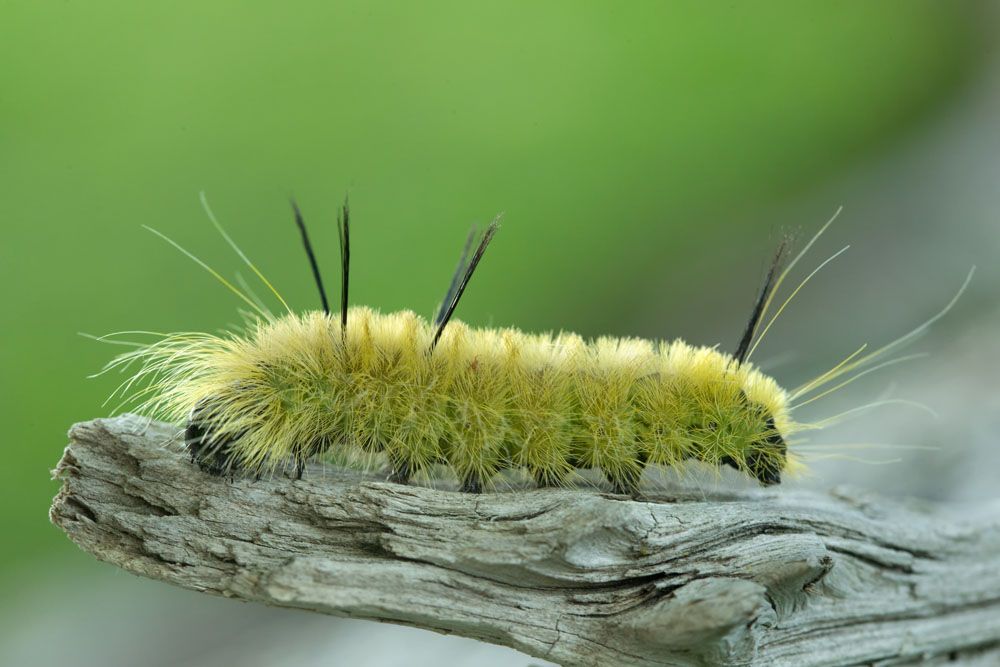
American Dagger Moth – Acronicta Americana
American Dagger Moth
Scientific Name: Acronicta americana
Common Name: American Dagger Moth
Appearance: The American dagger moth is called so because of the dagger-like markings on its forewings. It is the biggest size moth in the region and has grey-whitish setae on the wings and upper legs. Wings have a faint whitish band along the borders of the forewings with black spots. The Dagger moth caterpillar grows up to 2 inches long and has dense white or yellow hairs. It also has four slender black bristles that extend out from the body like eyelashes.
Host Plants or Food: American dagger moth caterpillar feeds on the leaves of the oak, alder, willow, ash maple, elm, and many other trees in gardens, parks and forests.
Territory: Throughout North America.
Mode of Damage: The American dagger moth caterpillars are leaf chewers; they feed on the leaves of the host trees.
Habits and Life History:
American dagger moth caterpillars are mostly active from June to October and are found in the soil near their host trees.
The young caterpillars have yellows setae that turn pale yellow or white when caterpillars get old.
They overwinter as pupae, and when the Spring arrives, adult American dagger moths emerge from the pupae and start mating.
Adult females lay eggs on the leaves of the host trees that hatch in Spring.
Caterpillars, after hatching, start feeding on the leaves of the trees and continue feeding throughout the summer.
When the winter is about to come, caterpillars crawl down the leaves towards the tree trunk to find the sites for pupation.
After finding the pupation sites, the caterpillar spin cocoons to pupate. They spend their whole winter in these cocoons and emerge as an adult in Spring, and the cycle continues.
They produce only one generation in a year.
